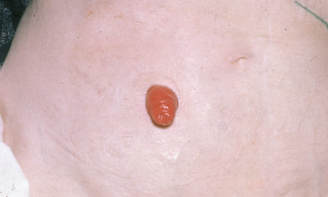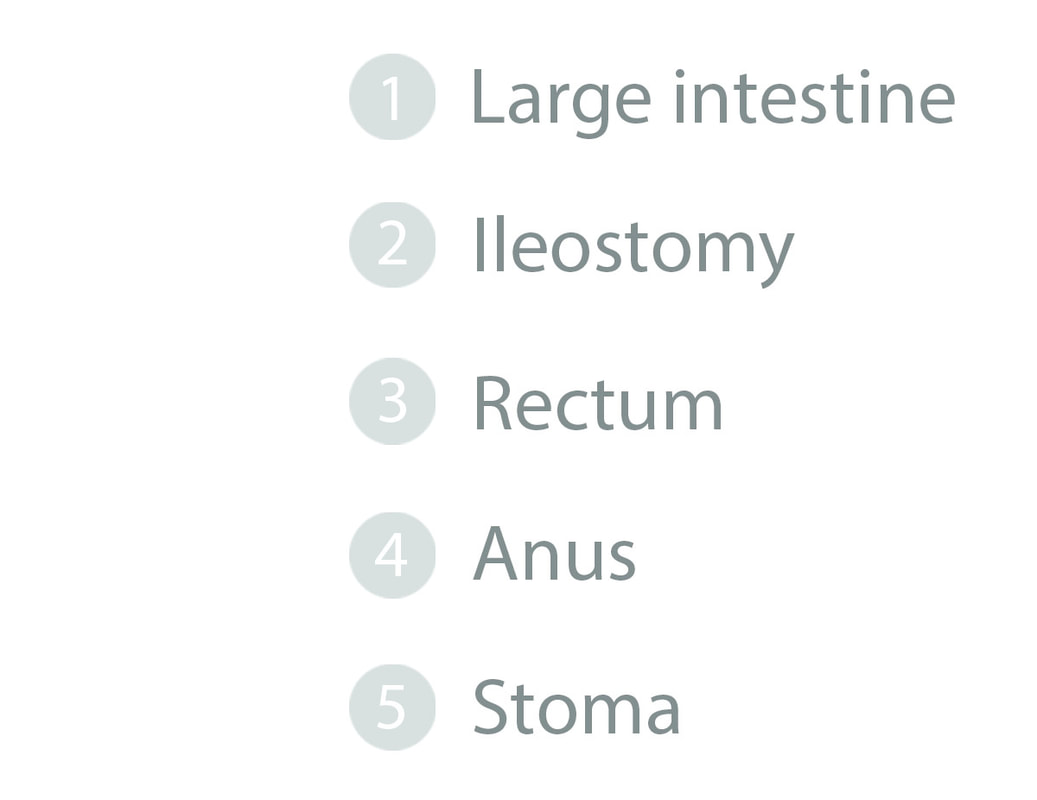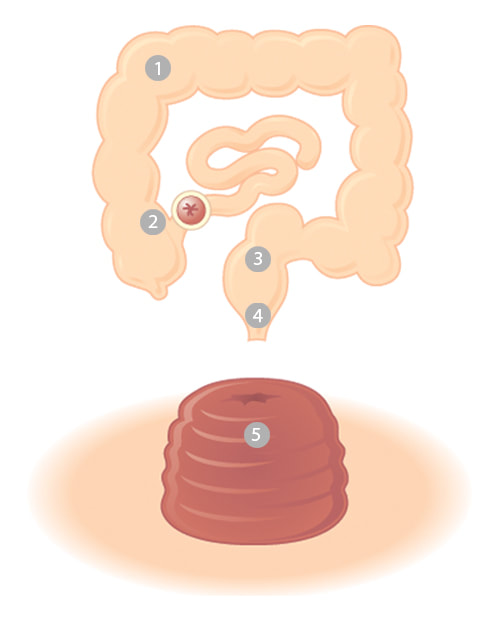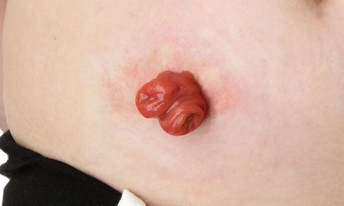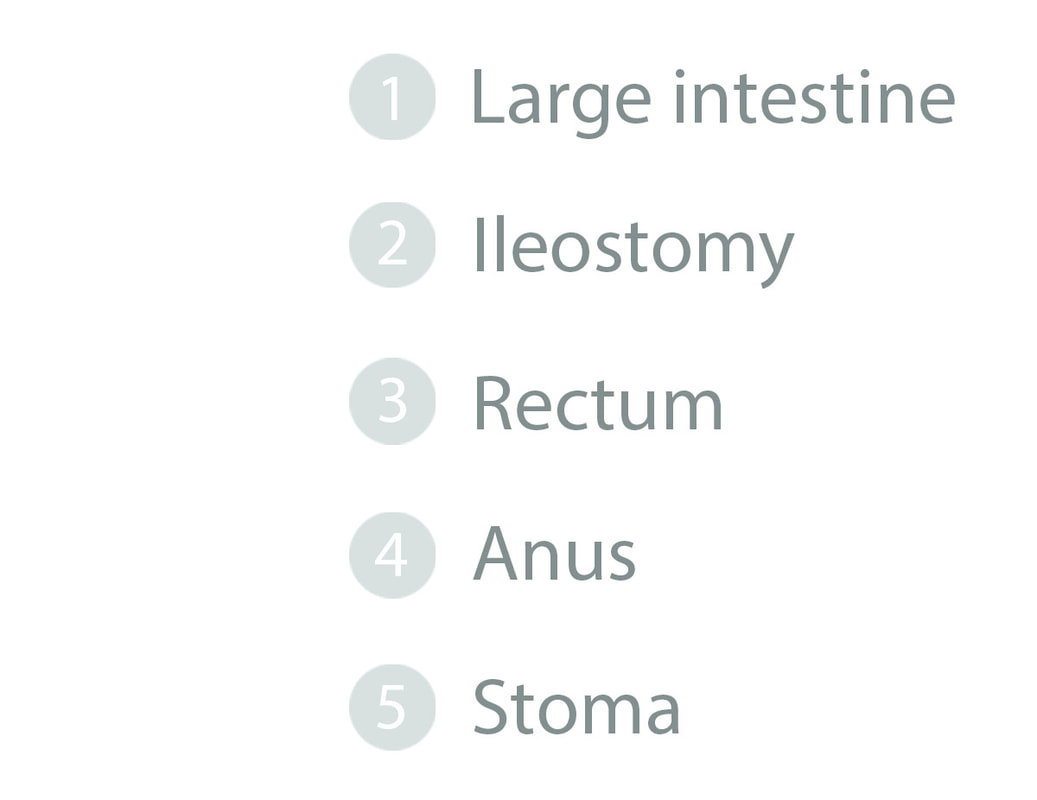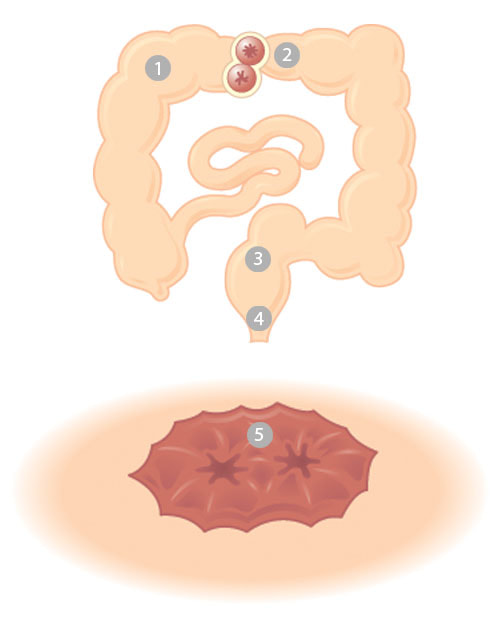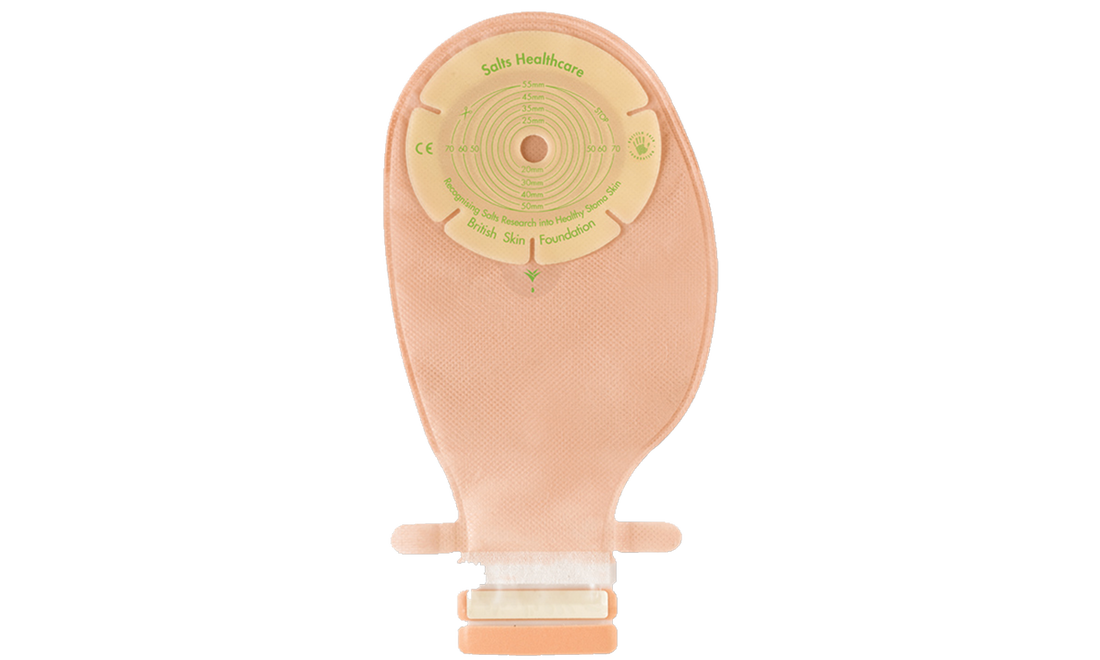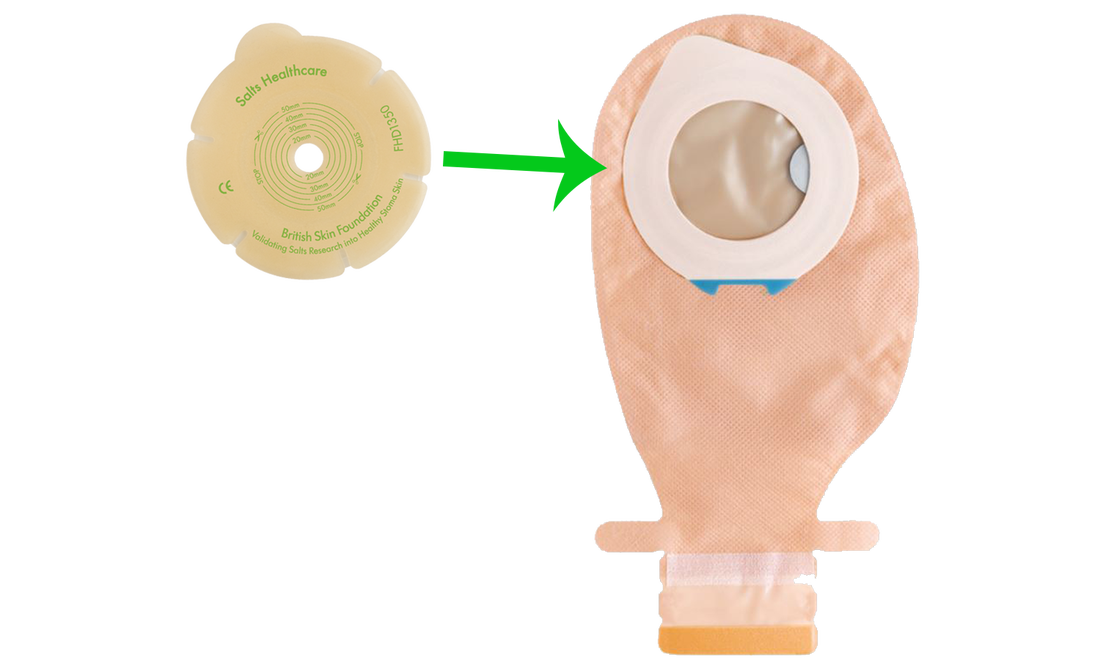Ileostomy
|
An ileostomy is formed by bringing part of the ileum to the surface of the abdomen. There are two types of ileostomy: end and loop. An ileostomy is generally sited on the right-hand side of the abdomen, but in some circumstances it may be made on the left-hand side. Ideally it has a spout of approximately 24-35mm. It should be pink in colour and moist.
The ileostomy has very little or no sensation and will reduce in shape and size between 6-8 weeks after formation. Normal output from an ileostomy is between 500-800ml in 24 hours. The consistency of the stools can range between watery to porridge-like. |
|
End Ileostomy
|
An end ileostomy is normally formed when the colon is removed and the ileum is brought out onto the surface of the abdomen. The end ileostomy may be temporary if the rectum and anus are left in situ (sub-total colectomy). If this is the case, the patient may be suitable for further surgery- for example, formation of an ileo-anal pouch. The ileostomy will be permanent if the colon, rectum and anus are removed (panproctocolectomy)
|
End Ileostomy
|
Loop Ileostomy
|
A loop ileostomy is usually temporary and is normally created to divert faeces away from a surgical join in the colon or rectum (anterior resection). A loop of ileum is brought to the surface of the abdomen and opened to form a stoma. It has a working end (proximal) which produces faeces and a non-working end (distal) which leads to the colon and may produce mucus.
|
Loop Ileostomy
|
Ileoanal Pouch
Ileoanal pouch is an alternative operation for patients with ulcerative colitis, and avoids a permanent ileostomy. The operation involves the removal of the colon and the rectum, with replacement of the rectum by a reservoir or pouch made out of the ilenium. the operation can be carried out in 1, 2 or 3 stages, depending on the health and fitness of the patient and the hospital in which surgery is performed.
|

